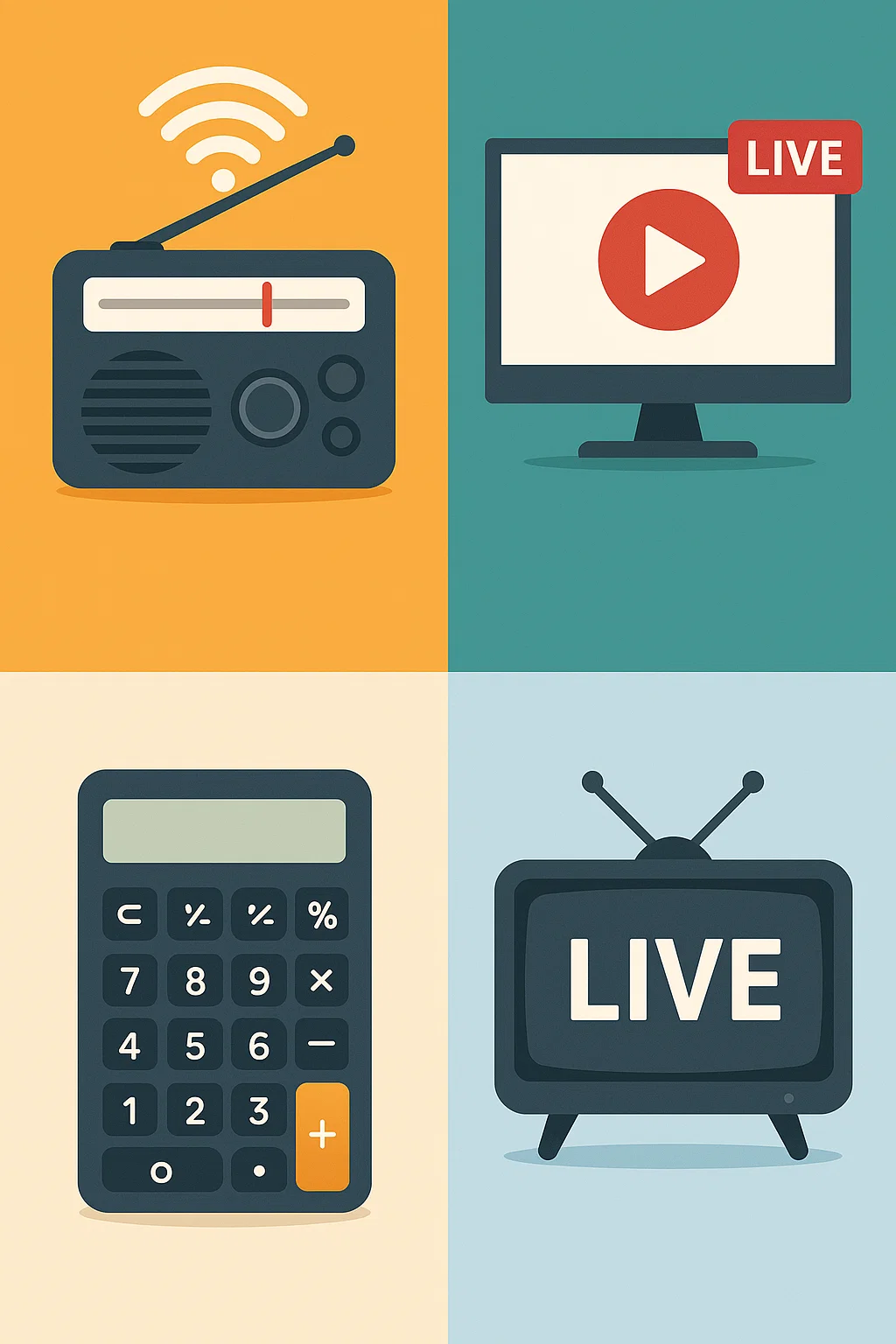Eight years later, I'm eating humble pie. Despite the explosion of streaming platforms, traditional broadcasting hasn't just survived—it continues to play a vital role in our media landscape. This persistence reveals something fascinating about viewing habits and content delivery that technophiles like me initially missed.

The Reliability Factor Nobody Talks About
Last month during a neighborhood power outage, I had a revealing conversation with my 73-year-old neighbor. While my smart TV sat useless, his battery-powered television picked up local broadcasts perfectly. "This is why I keep rabbit ears," he chuckled.
This seemingly minor anecdote highlights something significant: live TV broadcasts still possess fundamental technical advantages that internet-dependent streaming can't match. When infrastructure fails—whether from storms, power outages, or network congestion—traditional broadcasting's one-to-many transmission model remains remarkably resilient.
This isn't just about emergency situations. Martin Chen, network engineer at a major ISP, explained to me: "During peak viewing events like major sports finals, traditional broadcast infrastructure handles millions of simultaneous viewers without breaking a sweat. Streaming platforms still struggle with that scale without degradation."
The Unexpected Social Revival
Perhaps the most surprising development has been the social renaissance around live TV broadcasts. While streaming encourages personalized, asynchronous viewing, traditional broadcasting creates shared cultural moments.
"We've actually seen a resurgence in viewing parties for major live events," explained Sarah Williams, who researches media consumption patterns at Northwestern University. "There's something fundamentally different about knowing you're experiencing content simultaneously with millions of others."
I witnessed this myself during last year's World Cup. Local bars were packed with people watching matches on broadcast TV, creating community experiences that on-demand viewing simply can't replicate. The chat features some streaming platforms have added attempt to recreate this shared experience, but many viewers report they pale in comparison to physical togetherness.
Local Content: The Overlooked Battleground
Another area where traditional broadcasting maintains distinct advantages is local content. Despite attempts by streaming giants to incorporate local news and information, their efforts have been inconsistent at best.
"Our viewer surveys consistently show that local news remains a primary reason people maintain access to broadcast television," explained Thomas Rivera, station manager at a midwest affiliate. "When there's a storm coming or a major local event, people still turn to their local stations."
My personal experience confirms this. When wildfire smoke blanketed our city last summer, I found myself frustrated with the generic national news alerts on my streaming apps. I ended up huddled around my neighbor's TV for relevant local updates about air quality and school closures.
The Economics of Attention
The financial models underpinning these different viewing experiences also drive their divergent evolution. Streaming platforms generally aim to capture and retain individual attention for as long as possible within their ecosystems. Their recommendation algorithms and content strategies reflect this goal.
Traditional broadcasting operates differently. "Broadcast scheduling is about building audiences throughout the day and week," television producer Elena Martins told me. "It's less about keeping one viewer watching for hours and more about reliably attracting specific demographics at specific times."
This fundamental difference shapes everything from content creation to advertising strategies. The broadcast model continues to excel at delivering large, simultaneous audiences—something many advertisers still value highly despite the targeting capabilities of digital platforms.
The Hybrid Viewing Reality
What's emerged isn't the streaming revolution I predicted, but rather a complementary ecosystem where different viewing technologies serve different needs. Most households now maintain multiple options, switching between them contextually.
A recent survey found that 64% of American households that primarily use streaming services still maintain some form of access to traditional broadcasting. This isn't indecision—it's strategic consumption.
My own family illustrates this hybrid approach. We use streaming services for movies and binge-worthy series, but tune into broadcast channels for live sports, breaking news, and special events. Each technology serves specific viewing contexts rather than competing for all of our attention.
The Accessibility Gap
Perhaps the most overlooked factor in broadcasting's persistence is accessibility. Despite broadband expansion, significant portions of the population still lack reliable high-speed internet access. For these communities, traditional broadcasting remains essential rather than optional.
"When we discuss the future of television, we often forget that millions of Americans still live in broadband deserts," noted Congressman James Wilson at a recent telecommunications hearing. "For these citizens, over-the-air broadcasting isn't outdated—it's a lifeline for information."
Even in areas with good connectivity, economic barriers persist. Multiple streaming subscriptions quickly surpass the cost of basic antenna reception, making free over-the-air broadcasting the more economical choice for budget-conscious viewers.
Looking Forward: Convergence Rather Than Replacement
As traditional broadcasters develop their own streaming presences and streaming platforms incorporate more live content, the distinction between these technologies continues to blur. The ATSC 3.0 broadcast standard (NextGen TV) further accelerates this convergence, bringing internet-like capabilities to broadcast signals.
What seems increasingly clear is that my prediction of broadcasting's demise was not just premature but fundamentally misguided. The future isn't about one technology replacing another, but about how they complement each other and continue to evolve in response to how we actually want to consume content.
In my living room today, you'll find both a smart TV loaded with streaming apps and a small digital antenna tucked behind it. That hybrid setup would have seemed like a strange compromise to my cord-cutting self in 2015. Now it just seems like common sense.
Sometimes the revolution isn't about overthrowing the established order, but about finding its proper place in a more diverse ecosystem. Traditional broadcasting has found its place—not as a relic, but as a persistent technology with unique advantages that even the smartest streaming platforms haven't fully replicated.